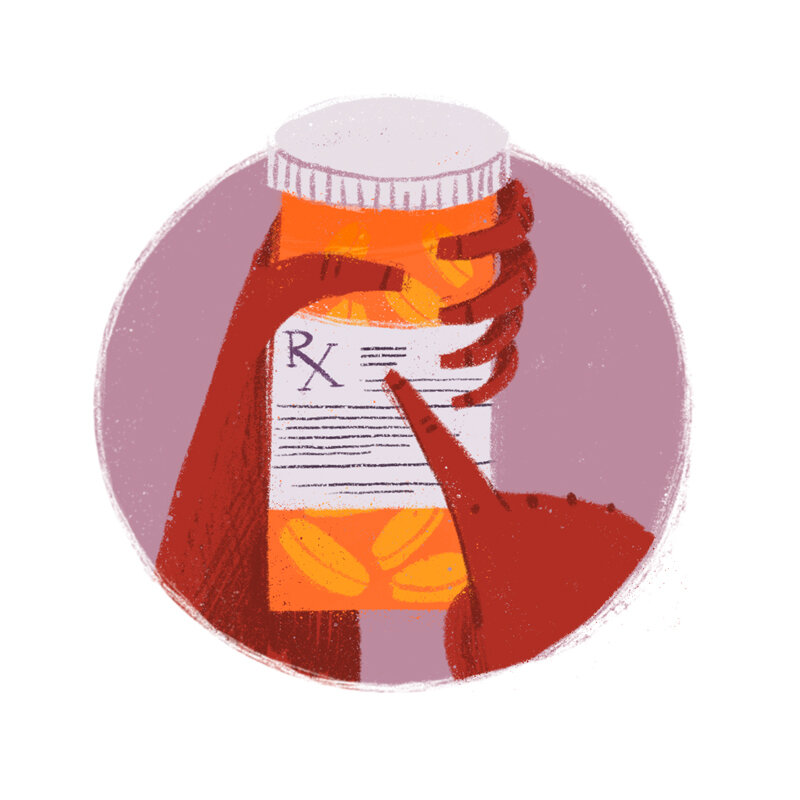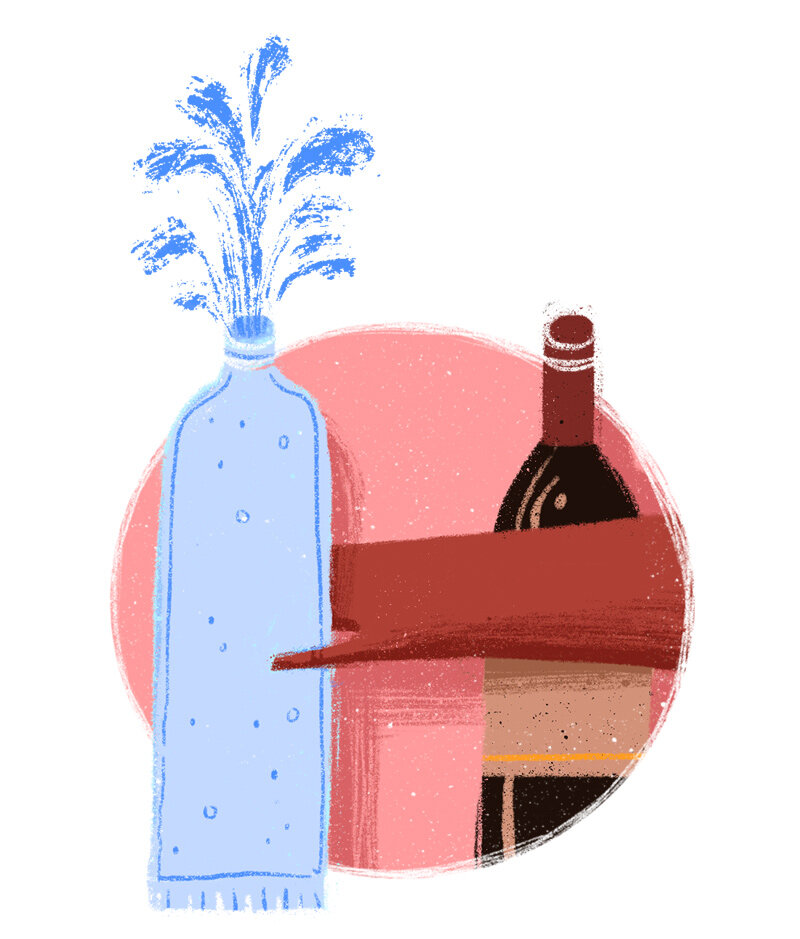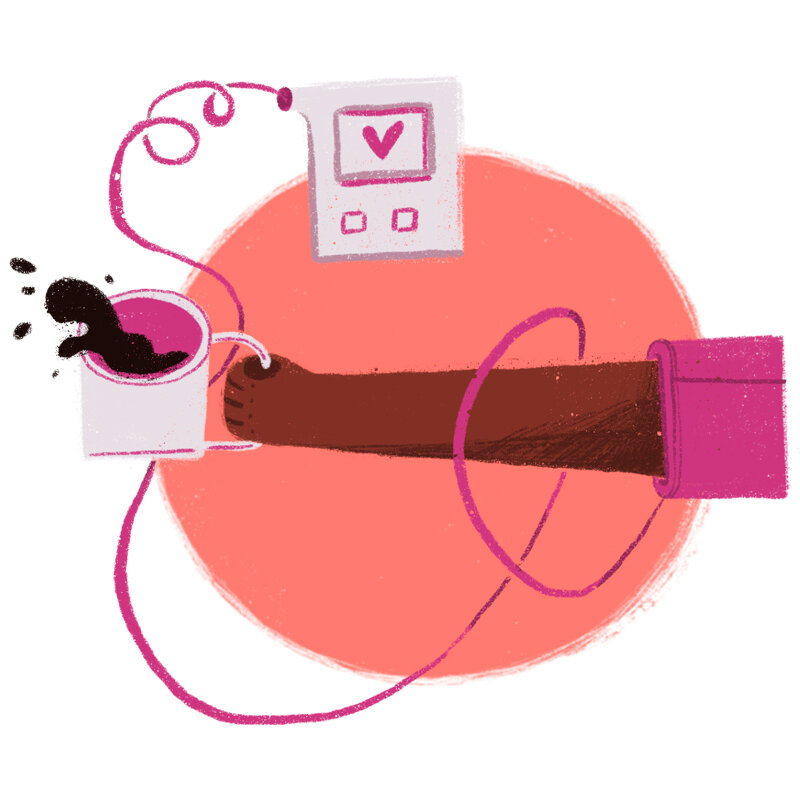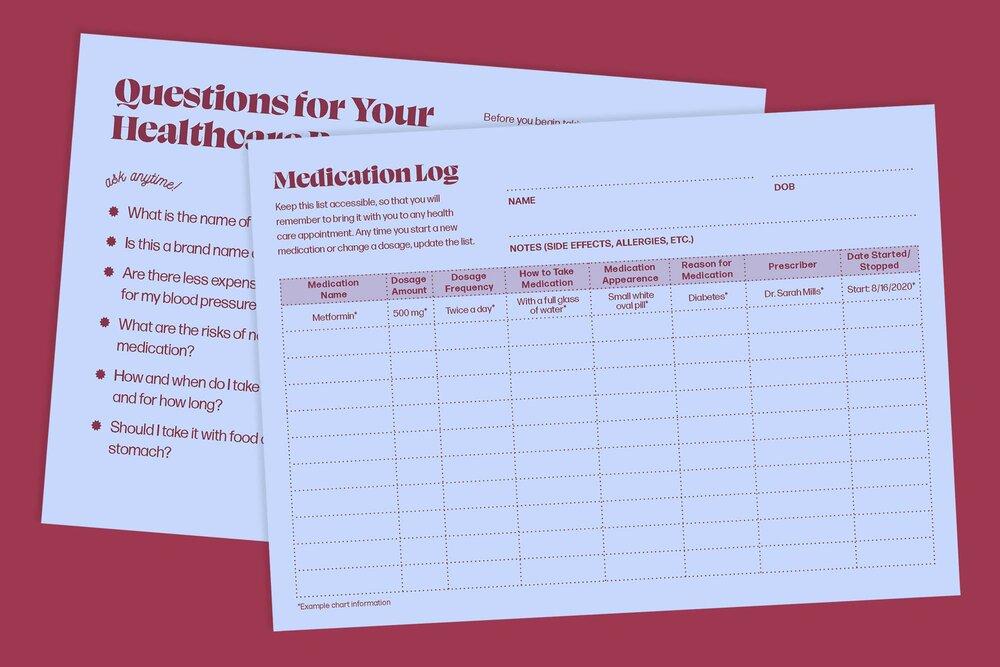Modifiable Risk Factors
NEED TO KNOW
SPECIAL ISSUE: HIGH BLOOD PRESSURE
WORDS - Aarti Patel
ILLUSTRATION - Lee Price, Lexi Nilson, Yuanyuan Zhou
High blood pressure is something that you can have a certain amount of control over. Whether you have already been diagnosed with high blood pressure, or if you’re trying to lower your risk level, we’re here to share a variety of steps you can take towards finding a strategy that works best for you! Don’t try changing all of the behaviors below at once, and remember that taking small steps can have a positive impact.
Know your numbers
Being aware of your typical blood pressure level and monitoring it regularly can help you to catch any changes in your body early on. See “Know Your Numbers” for more on tracking and understanding your blood pressure readings.
You can find free blood pressure monitors at many pharmacies. If you know that you have high blood pressure, it can be helpful to have your own blood pressure monitor cuff at home so that you can test more frequently.
Consider Your Drug Use
Stimulants like amphetamines, cocaine, and opioids may cause changes in your blood pressure and heart rhythm, and can cause plaque buildup in your arteries.
Up to 25% of non-fatal heart attacks for people between 18-45 are associated with regular cocaine use.
If you’ve experienced chest pains or pressure while using stimulants, you should see a health care provider so they can perform necessary testing for your heart.
While opioids (like heroin) may not cause high elevations in blood pressure during a single session, this can be an increasing side effect over time. Withdrawals from heroin can also cause temporary elevations in blood pressure.
Medication assisted therapies like buprenorphine, methadone, and naltrexone can be used to treat opioid use disorders. These therapies are safe to use long-term and reduce your health risk of high blood pressure.
Reduce Your Sodium Intake
Reducing your sodium intake to less than 2,300 mg of sodium a day can help maintain a healthy blood pressure. 2,300 mg of sodium is equal to about 1 teaspoon of salt.
If you have hypertension, diabetes, chronic kidney disease, and/or are over the age of 51, you should reduce your sodium intake to less than 1,500 mg per day.
Processed foods tend to contain more salt. You can tell how much sodium something contains by reading the label on the package.
Be thoughtful about how much salt you add to your own food at the table. Consider other ways to add flavor, like herbs, vinegar, or lemon juice.
Limit Alcohol
Consumption of alcohol, especially in high amounts, can lead to high blood pressure. Try to limit your consumption to one drink per day.
Substituting an alcoholic drink with seltzer water, a mocktail, or non-alcoholic beer can make it easier to reduce your alcohol intake at social events.
Ask your friends and family to consider social activities that don’t include alcohol, like hiking, playing board games, taking a cooking class, or seeing a movie.
be Active
Aerobic activity, or “cardio,” can have a variety of health benefits, including lowering your blood pressure.
It’s easier to commit to exercise if you are doing an activity that you like. Anything that gets you moving and your heart rate up counts!
Make a routine! Sticking to your routine is easier if you get a friend or accountability partner involved. Plan to do the same online workout class together or schedule a walk with your neighbor.
Any amount of exercise is better than nothing, so start slowly and work your way up by exercising for a little longer, walking a little farther, or adding another day to your routine. A good goal for each week is either 150 minutes of physical activity at a moderate intensity (walking, gardening, or shooting baskets), or 75 minutes at a high intensity level (running, cycling, or swimming).
Remember that your daily exercise does not need to be continuous. Think about squeezing in some jumping jacks and stretches in between meetings, or while you’re waiting for water to boil on the stove.
Reduce Your Caffeine Intake
Caffeine is found in many common foods and drinks, including tea, coffee, chocolate, and soft drinks. You don’t need to give up everything containing caffeine, but reducing the amount you consume can help you keep your blood pressure levels low.
Caffeine affects everyone differently, so it can be helpful to test your own body’s reaction. Check your blood pressure before drinking a cup of coffee, and then check it again at least 30 minutes later. If either of the numbers has increased by 5 to 10 points, your blood pressure may be more sensitive to caffeine.
It’s generally a good idea to avoid caffeine before activities that would naturally increase your blood pressure, like exercise or stressful situations.
Caffeine can be addictive. If you plan to decrease your intake, do so gradually to avoid headaches or other negative withdrawal effects.
Stop Smoking
Every time you smoke a cigarette, you experience a temporary increase in your blood pressure.
Smoking doubles your risk of developing coronary heart disease, or damage in the heart’s major blood vessels, which can lead to a heart attack.
Quitting smoking is not easy, but there is support available from doctors and pharmacists. Ask one of these health care providers about methods that may work best for you.
Eat More Fiber
Eating more fiber may decrease blood pressure. It’s recommended to eat 20 to 35 grams of fiber per day.
You can find fiber in beans, grains, vegetables, and fruits. Look for ways to replace high sodium processed foods with fruits and veggies in your regular recipes, or try out new recipes that include them.











